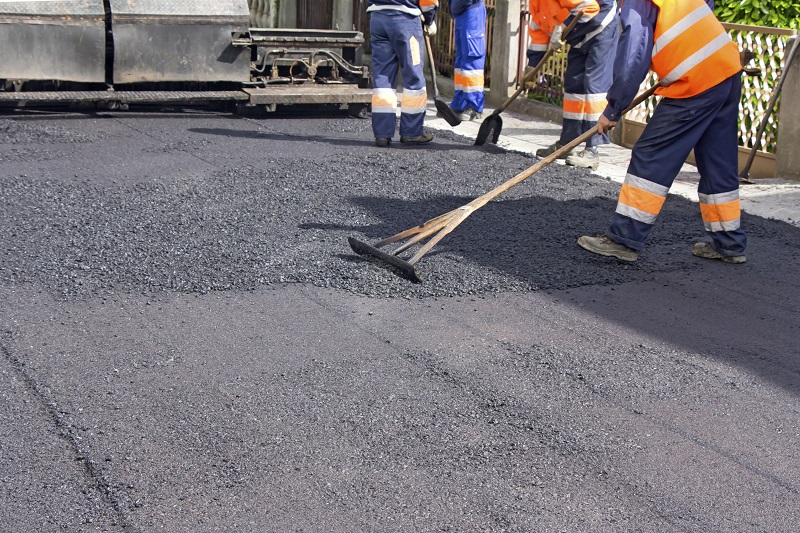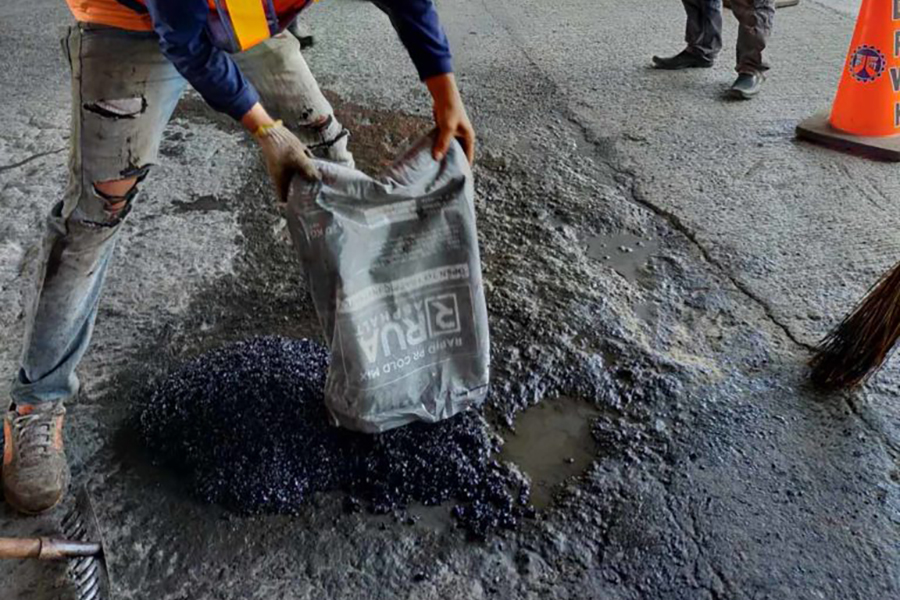Optimize Space Effectiveness with Hot Mix Asphalt Angled Parking Lot Solutions
Opening the Secrets of Warm Mix Asphalt Innovation
Exploring the midsts of warm mix asphalt modern technology uncovers a globe where precise procedures and exact formulations assemble to form our roadways and framework. The blend of fillers, binders, and aggregates isn't just a building and construction job however a calculated orchestration of longevity and efficiency. As we peer into the intricate dance of parts, a tapestry of strength and sustainability unfolds. What lies below this surface of asphaltic proficiency, and what tricks wait to be unveiled in the world of leading developments?
Value of Hot Mix Asphalt
Warm Mix Asphalt plays a vital duty in modern-day infrastructure growth due to its resilience and cost-effectiveness. As the most generally used leading material for roads, highways, and car park, Warm Mix Asphalt offers a series of benefits that add to its relevance in building tasks. One key benefit is its capacity to stand up to hefty traffic lots and severe climate conditions, supplying a reputable and durable surface for transportation networks. Additionally, Warm Mix Asphalt is affordable in both preliminary building and construction and long-term maintenance, making it a favored choice for many facilities jobs.
The sturdiness of Hot Mix Asphalt stems from its make-up, which includes aggregates, binder, and filler products that are meticulously chosen and mixed to fulfill certain performance needs. Overall, the relevance of Hot Mix Asphalt in framework advancement can not be downplayed, as it continues to be a cornerstone of contemporary construction techniques.
Components of Asphalt Mixes
The composition of asphalt mixes is composed of thoroughly chosen accumulations, binder, and filler products that are crucial for attaining specific performance requirements. Aggregates are the main component of asphalt mixes, offering stamina and security. The binder, usually bitumen or asphalt cement, holds the aggregates together and provides flexibility and resilience to the mix.
The combination and proportion of these elements play a substantial duty in establishing the top quality and efficiency of the asphalt mix. Designers very carefully make the mix to fulfill details needs, considering elements like traffic volume, climate problems, and pavement lifespan. Proper selection and harmonizing of accumulations, binder, and fillers are crucial for creating durable, lasting asphalt pavements.
Mixing and Manufacturing Strategies

As soon as the accumulations are picked, the binder, often asphalt cement, is included in bind the materials together. The binder's quality and quantity significantly impact the mix's versatility, resistance, and toughness to environmental elements. In addition, fillers like moisturized lime or Portland cement might be included to improve details features of the asphalt mix, such as its workability or dampness resistance.
Throughout production, the aggregates and binder are warmed, generally between 250-325 ° F(121-163 ° C ), to help with mixing and make certain correct coating of the aggregates. The commercial parking lot paving blending procedure should be extensive to accomplish an uniform mix that promotes the wanted performance characteristics of the asphalt. Numerous techniques, such as batch blending or drum mixing, are used to accomplish consistent and high-quality asphalt mixes for building and construction projects.
Variables Impacting Asphalt Performance
Factors influencing asphalt efficiency encompass a variety of variables that affect the durability, long life, and total high quality of asphalt sidewalks. One essential factor is the high quality of materials used in the asphalt mix. The kind and source of accumulations, the binder quality, and the additives all play a substantial role in determining the efficiency of the asphalt sidewalk. The gradation of aggregates is critical as it impacts the mix's resistance, security, and workability to rutting and cracking.

Design considerations, such as pavement density and drain, are necessary in guaranteeing the long-lasting efficiency of the asphalt sidewalk. By meticulously taking into consideration these factors, designers and specialists can optimize asphalt performance and improve the service life of sidewalks.
Lasting Practices in Asphalt Innovation

WMA permits for the production and positioning of asphalt blends at reduced temperatures contrasted to conventional hot-mix asphalt, resulting in lowered energy usage and greenhouse gas exhausts. The use of permeable asphalt blends can aid minimize stormwater runoff issues by enabling water to penetrate through the pavement and right into the ground, advertising natural water purification and reenergize processes.
Verdict
In verdict, hot mix asphalt technology plays an essential role in modern framework advancement due to its sturdiness and cost-effectiveness. By carefully stabilizing elements, utilizing appropriate mixing strategies, and thinking about various variables, designers can produce high-grade asphalt mixes that stand up to hefty website traffic tons and severe weather condition conditions. Accepting sustainable practices, such as making use of recycled materials and warm-mix innovations, further boosts the ecological kindness of asphalt innovation.
Mixing and production techniques in warm mix asphalt modern technology include the accurate combination and handling of aggregates, binder, and fillers to create a high-performance and durable asphalt mix.Factors affecting asphalt performance incorporate a variety of variables that affect the resilience, long life, and general top quality of asphalt sidewalks. Lasting practices in asphalt modern technology include various efforts aimed at decreasing the ecological impact of asphalt manufacturing and paving processes. By including reclaimed asphalt sidewalk (RAP) and recycled asphalt shingles (RAS) right into brand-new asphalt blends, the industry can dramatically decrease the consumption of raw materials and power, while likewise lowering garbage dump waste.
WMA permits for the production and positioning of asphalt mixes at reduced temperatures contrasted to traditional hot-mix asphalt, resulting in minimized power usage and greenhouse gas exhausts.